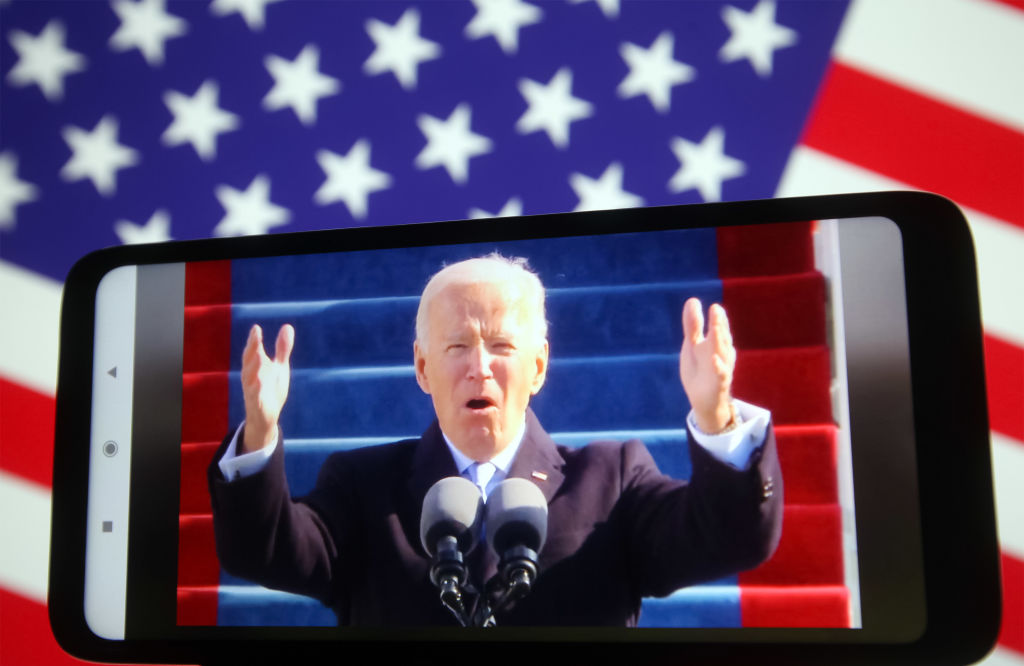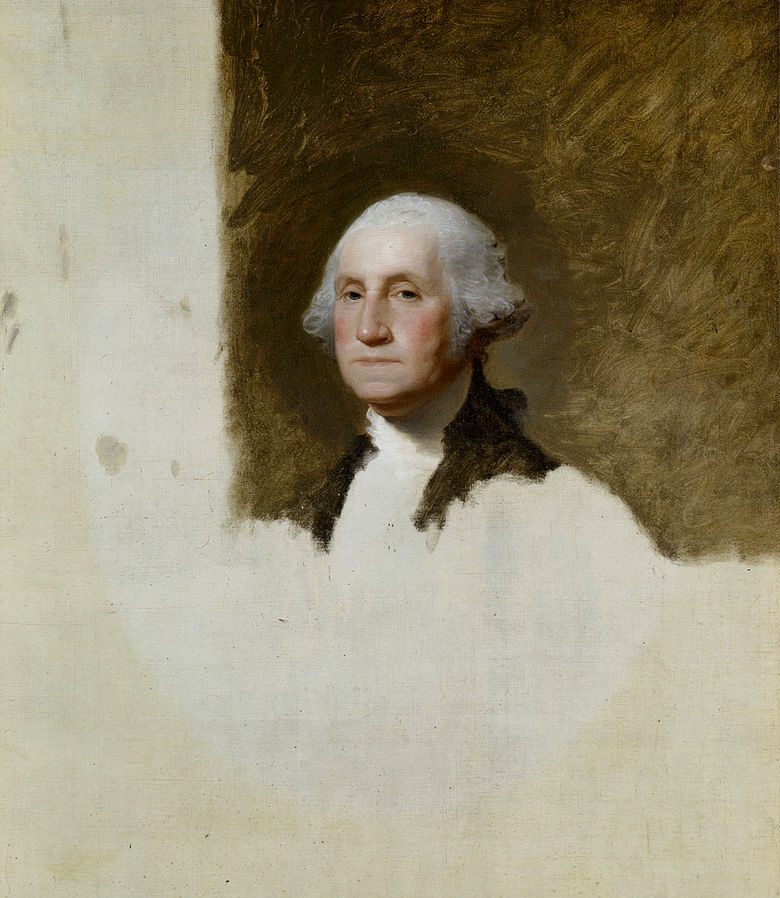Democracy and despotism in a digital age.
Big Brother Biden

The roadmap for systemic censorship is receiving little attention because the Court punted on the substance of the issue.
The Supreme Court’s confounding 6-3 ruling for the Biden administration in Murthy v. Missouri (previously, Missouri v. Biden), frees the administration to expand its whole-of-government censorship enterprise.
Contrary to the insincere assertion in Justice Amy Coney Barrett’s majority opinion that the Court lacks jurisdiction to reach the merits of the dispute, her opinion does just that, adopting the tone and principles of the three liberal justices who joined in the majority. It is disquieting that Barrett, John Roberts, and Brett Kavanaugh, who also joined the majority, have embraced far-Left nomenclature.
From selecting euphemisms such as “content moderation,” in lieu of “censor” or “suppress,” to scenarios that are contrary to the evidence and findings of the lower courts, inferences favorable to the administration, and a rejection of plaintiffs’ thesis that government coercion is a “but for” cause of instances of censorship, the majority presents the administration as a passive player in its censorship juggernaut.
To paraphrase President Joe Biden, it is not hyperbole to observe that the Biden administration now may expand its efforts to suppress core political speech in a ferocious assault on the First Amendment, bedrock American rights, and democracy.
The Court nominally ruled in favor of the administration’s position that the plaintiffs lacked standing to challenge the government censorship enterprise, thereby mooting, while not technically overruling, the findings of U.S. District Court Judge Terry Doughty and a unanimous panel of the Fifth Circuit Court of Appeals that the administration had conducted “a far-reaching and widespread censorship campaign” against Americans who expressed disfavored views.
Remarkably, the opinion never mentions National Rifle Association v. Vullo, a decision announced just two months earlier in which the Court unanimously re-affirmed its holding in Bantam Books, Inc. v. Sullivan (1963) that the First Amendment prohibits government officials from wielding their power selectively to punish or suppress speech, including through private intermediaries. In Vullo, the Court remanded for trial allegations that the former superintendent of the New York Department of Financial Services violated the First Amendment by coercing regulated entities to terminate their business relationships with the NRA in order to punish or suppress the NRA’s gun-promotion advocacy.
In his scathing dissent, Justice Samuel Alito, joined by Justices Clarence Thomas and Neil Gorsuch, mentioned Vullo eight times, pointedly observing the main take-away from the majority’s decision: “What the officials did in this case was more subtle than the ham-handed censorship found to be unconstitutional in Vullo, but it was no less coercive. And because of the perpetrators’ high positions, it was even more dangerous. It was blatantly unconstitutional, and the country may come to regret the Court’s failure to say so. Officials who read today’s decision together with Vullo will get the message. If a coercive campaign is carried out with enough sophistication, it may get by. That is not a message this Court should send.”
The First Amendment prohibits Congress and the executive from abridging the freedom of speech. In Norwood v Harrison (1973), Chief Justice Warren Burger warned that it is “axiomatic that a state may not induce, encourage or promote private persons to accomplish what it is constitutionally forbidden to accomplish.”
After extensive discovery, District Court Judge Doughty held that officials at the White House, the Surgeon General’s Office, the CDC, the FBI, and the Cybersecurity and Infrastructure Security Agency (CISA), an agency in the Department of Homeland Security, likely “coerced” and “significantly encouraged” social media platforms to such an extent that their decisions should be deemed to be the decisions of the government. On Independence Day last year, Doughty issued a preliminary injunction that blocked the White House and numerous federal agencies from continuing to do so.
In September, the Fifth Circuit adopted Doughty’s factual findings, but modified his injunction to prohibit the White House, CDC, Surgeon General, and FBI from taking “actions, formal or informal, directly or indirectly, to coerce or significantly encourage social-media companies to remove, delete, suppress, or reduce, including through altering their algorithms, posted social-media content containing protected free speech.”
The Fifth Circuit held that the individual plaintiffs had standing to seek injunctive relief because, as a result of government coercion, social-media companies had suppressed the plaintiffs’ speech in the past and were likely to do so again in the future, and the States had standing because the platforms restricted the posts of their officials, and the States also have the right to “listen” to their citizens on social media.
It reiterated that violations of protected speech by the platforms become state action when the government “coerces” or “significantly encourages” the violations. It held that plaintiffs likely would establish both, observing that the evidence shows the defendants made public and private threats of adverse government action, including increased regulation, antitrust enforcement, and changes to Section 230 of the Communications Decency Act (which insulates internet companies from liability for third-party content), and applied unrelenting pressure via demands for greater censorship.
The Fifth Circuit concluded that: “On multiple occasions, the officials coerced the platforms into direct action via urgent, uncompromising demands to moderate content. Privately, the officials were not shy in their requests…. And, more importantly, the officials threatened—both expressly and implicitly—to retaliate against inaction. Officials threw out the prospect of legal reforms and enforcement actions while subtly insinuating it would be in the platforms’ best interests to comply.”
The Supreme Court majority rejected Doughty’s and the Fifth Circuit’s findings of fact and law, and the premise that the government had coerced social media companies. Rather, the majority believes that, at worst, the government is assisting these companies to do that which they were already doing, and would have done without the government’s participation. In coming to this view, the majority ignored the largely uncontroverted evidence and adopted the administration’s and progressives’ dishonest use of the term “content moderation” in place of “censor” and “suppress.”
Technically, the majority held that to gain standing, it would be insufficient for a plaintiff to allege that he or it is part of a class that government officials coerced platforms to suppress. Rather, a plaintiff must demonstrate that a specific federal agency took specific action that specifically caused a platform to violate that plaintiff’s free speech rights. Sticking to her progressive nomenclature, Barrett wrote: “The primary weakness in the record of past restrictions is the lack of specific causation findings with respect to any discrete instance of content moderation. The District Court made none. Nor did the Fifth Circuit, which approached standing at a high level of generality.” She added: “This evidence indicates that the platforms had independent incentives to moderate content and often exercised their own judgment. To be sure, the record reflects that the Government defendants played a role in at least some of the platforms’ moderation choices. But the Fifth Circuit, by attributing every platform decision at least in part to the defendants, glossed over complexities in the evidence.”
Barrett drew a distinction between a lawsuit for damages for prior bad acts, and an injunctive action which has the added burden of showing the bad acts likely will continue. She opined “To obtain forward-looking relief, the plaintiffs must establish a substantial risk of future injury that is traceable to the Government defendants and likely to be redressed by an injunction against them. To carry that burden, the plaintiffs must proffer evidence that the defendants’ “allegedly wrongful behavior would likely occur or continue.”
Barrett rejected the “right to listen” theory as “startlingly broad,” and concluded that “the plaintiffs, without any concrete link between their injuries and the defendants’ conduct, ask us to conduct a review of the years-long communications between dozens of federal officials, across different agencies, with different social-media platforms, about different topics. This Court’s standing doctrine prevents us from exercising such general legal oversight of the other branches of Government.”
Unlike a private lawsuit or criminal proceeding that would employ theories of conspiracy or RICO to hold members of the conspiracy liable for their own acts and the acts of others involved in the conspiracy, Barrett immunizes participants in a government conspiracy from actions taken by other agencies, and relieves each agency of liability if its role is insufficient, on its own, to create liability.
The majority studiously refused to grasp the scope of the conspiracy, which Doughty found to include numerous federal agencies and officials. Contrary to Barrett’s unfounded speculation that the social media companies would have censored (or, to use her insidious term, “moderated”) speech regardless of the government’s role, Doughty found that in many instances, the government was the “but for” cause of the censorship. Contrary to the majority’s head-in-the sands opinion, he found that:
Defendants used meetings and communications with social-media companies to pressure those companies to take down, reduce, and suppress the free speech of American citizens. They flagged posts and provided information on the type of posts they wanted suppressed. They also followed up with directives to the social-media companies to provide them with information as to action the company had taken with regard to the flagged post. This seemingly unrelenting pressure by Defendants had the intended result of suppressing millions of protected free speech postings by American citizens….If there were ever a case where the “significant encouragement” theory should apply, this is it.
In September 2022, I was one of the first to write about the administration’s censorship enterprise. My article in National Review includes a lengthy analysis of First Amendment law and the voluminous evidence introduced by the plaintiffs with their amended complaint. The documents, most of which I read, showed that at least 80 senior officials from at least 11 federal agencies participated in this concerted federal undertaking.
As I explained in The American Mind, the scope of the administration’s targets is breathtaking. Doughty ruled there was a substantial likelihood the government had censored: (1) views on Covid unacceptable to progressives; (2) conservative-leaning speech; (3) the Hunter Biden laptop story; (4) discussions about election integrity and the security of voting by mail; (5) parodies about defendants; (6) negative posts about the economy; (7) negative posts about Biden, including calling him a liar; and (8) discussions about gas prices, climate change, gender, and abortion.
Doughty wrote that “the present case arguably involves the most massive attack against free speech in United States’ history,” adding, “[T]he evidence produced thus far depicts an almost dystopian scenario. During the Covid-19 pandemic… the United States Government seems to have assumed a role similar to an Orwellian Ministry of Truth” which altered historical records and disseminated propaganda to manipulate and control public perception.
Indicative of the broad reach of the Biden censorship enterprise, in November 2021, CISA director Jen Easterly asserted that people should not be allowed to come to their own decisions about what is true. She added that her agency was “in the business of protecting critical infrastructure, and the most critical is our cognitive infrastructure.” Government was seeking to control what we think, as well as what we communicate.
The dissent takes apart the majority’s blinkered view. It uses specific examples to illustrate the linkage between the actions taken by specific government officials and censorship of specific plaintiffs. Alito correctly observes that the record “plainly shows” specific government officials at the highest levels of the Federal government “continuously harried and implicitly threatened” social media with potentially crippling consequences for non-compliance. He notes that because of internet platforms’ vulnerability to government regulation, they have a “powerful incentive to please important federal officials” and the record shows federal officials fully exploited that vulnerability.
A court distinguishes between permissible persuasion and unconstitutional coercion by analyzing three factors: (1) the authority of the government officials who are alleged to have engaged in coercion, (2) the nature of statements made by those officials, and (3) the reactions of the third party alleged to have been coerced. As Alito correctly concluded, in Murthy “all three factors point to coercion.”
Unless Congress steps in, or a future court overrules or limits Murthy, an administration that carefully diffuses mass censorship of core political speech among multiple agencies will be free to do just that, with little risk of judicial intervention. Because the ruling purports to be based on standing, rather than the merits, it has received far less attention and understanding than it warrants. As its devastating impact unfolds, that will change.
The American Mind presents a range of perspectives. Views are writers’ own and do not necessarily represent those of The Claremont Institute.
The American Mind is a publication of the Claremont Institute, a non-profit 501(c)(3) organization, dedicated to restoring the principles of the American Founding to their rightful, preeminent authority in our national life. Interested in supporting our work? Gifts to the Claremont Institute are tax-deductible.
In 2010, Claremont Institute Senior Fellow Angelo Codevilla reintroduced the notion of "the ruling class" back into American popular discourse. In 2017, he described contemporary American politics as a "cold civil war." Now he applies the "logic of revolution" to our current political scene.
Claremont Institute Senior Fellow John Marini is one of the few experts on American Government who understood the rise of Trump from the beginning of the 2016 election cycle. Now he looks to the fundamental question that Trump's presidency raises: is the legitimacy of our political system based on the authority of the American people and the American nation-state, or the authority of experts and their technical knowledge in the service of "progress"?




